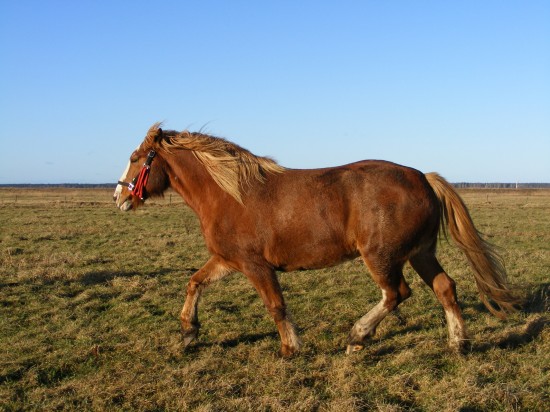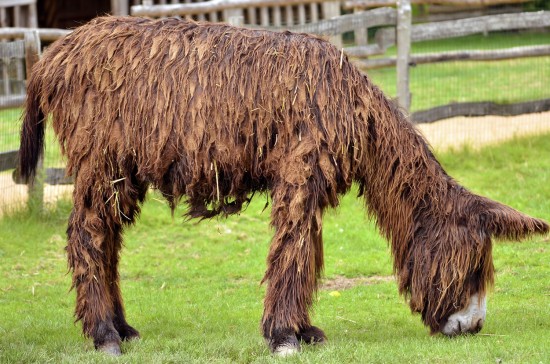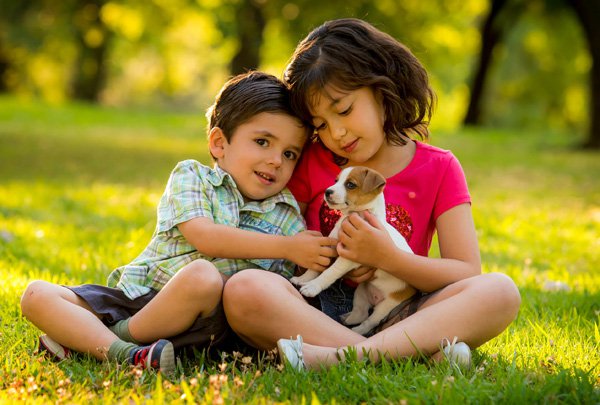
You finally have taught your dog to walk without pulling on his leash and all seems fine...until he spots that squirrel across the street. Suddenly your relaxed, well-behaved dog has been transformed to some sort of barking, lunging, animal that feels like he is pulling your arm off as you try to hold him back. Your dog's trigger may not be squirrels, it could be rabbits, or other dogs, and the actual causes are varied, but the suggestions that follow should help you teach your dog to deal with these triggers in a way that will still allow you to enjoy your walks.
First, what is causing your dog to go crazy like that? Usually, it is from two main causes; fear or what is commonly referred to as "prey drive". If your dog is barking at another dog or a person that he has spotted, it is usually (but not always) a fear reaction. To their owners, a dog that is barking loudly and pulling at his leash to get to something across the street certainly doesn't seem like a reaction caused by fear, however many dogs exhibit fear in this way in order to send a loud and clear message that "I am uncomfortable with you being near me. Stay away!". Alternatively, some dogs will have a seemingly uncontrollable need to chase after any squirrel or rabbit that they spot. This "prey drive" instinct varies in intensity from dog to dog and from breed to breed. I have two dogs and lucky me, one has a classic fear reaction to other dogs and people, while the other loves other dogs and people, but is driven to chase after rabbits and squirrels. Unfortunately, when I am walking the two of them, if one gets excited about their own trigger, the other always has to join in with the excitement. Now as hard as it may be to control one dog that is lunging and barking at something or someone, imagine what it is like with two medium sized dogs going crazy like that. I have to admit that before I was able to get things under control, they were able to knock me off my feet on more than one occasion.
How does one deal with this? I will be going over several different methods, starting with the ones that should work with mild cases and then continue on to other techniques that should work for more challenging dogs. So if my first or second suggestion does the trick, you obviously don't need to keep trying the other methods. Also remember, the path to resolution for this type of a problem is a process that could easily take weeks. But that really isn't such a long time when you consider the years of pleasant dog walks ahead. Finally, if your dog does lunge enthusiastically, you should definitely consider using a harness to clip his leash to instead of a standard collar, as this may avoid injuries to your dog's neck.
For starters, some trainers say that it is up to the owners to project a strong positive attitude. The feeling is that if your dog is afraid of dogs or people, but sees you confident and in control, he will follow your example. I have had success with this strategy when I had one dog that had fear issues, so by all means give this a try. Don't dwell on past behaviors and get stressed when you see a potential "trigger" approaching. Simply stand up straight and project confidence and a positive attitude while shortening the amount of leash so you are more in control as you continue your walk. When the "trigger" situation occurs, keep your positive attitude and let out a hearty "Let's go!" as you guide your dog through the situation. You want to project a "Not to worry...I've got this!" attitude towards your dog. If this doesn't work, because your dog's reaction is too strong, there are other strategies.
Taking things up a level, there a couple of behaviors that you should start working on, and allow at least a week for your dog to really "get it". First, it will be helpful for your dog to learn to be calm when the trigger is off at a safe distance. Once you see the squirrel (or whatever your dog's trigger is) and you are far enough away that your dog is still calm, have your dog sit. Of course this assumes that your dog has learned the "sit "command. Now keep him distracted by giving him small treats as long as your dog is relaxed. The idea is to have your dog associate the trigger with getting treats and calm behavior. Don't bother with treats if he is clearly anxious, he probably won't take them under those circumstances anyway. When you think your dog has done the best he can, finish up by walking away from the trigger. It's important to end on a positive note. As time goes by, you should be able to safely get closer to trigger without your dog getting anxious. Doing just this may not resolve the problem, but it is a good start. Don't be surprised if you find that you can only get so close to the trigger without your dog starting to get anxious no matter how slowly you built up to that distance. Just keep that distance in mind in the future when you are walking your dog near potential triggers.
During the same time period, there is another behavior that you should be working on. Get your dog to focus on you on command when you say his name. Simply say his name and when he looks at you, give him a treat. If he doesn't look at you, no treat! You can do this in the house, the backyard, or on a quiet time during a walk. It will take a little time, but soon your dog will automatically look at you with positive association when you say his name. And of course some dogs love treats so much that they get this right away, others take longer or require more tasty treats. Believe it or not, once your dog has reached the point where he has learned this behavior , when you are walking him and see a squirrel, saying his name will divert the attention to you, away from the squirrel. Another benefit is that if you are very consistent about this, your dog will eventually associate what was once a trigger with him getting treats from you. As you and your dog build up a pattern of good behavior and treats when a trigger is in the area, your dog will show significantly less anxiety when he does spot triggers.
Another long term strategy is whenever possible, avoid excitement, before, and during the walk. Repeated bad behavior creates a memory for your dog that lunging and excitement are part of going for a walk. Once he has a history of being in a relaxed mode for his walk, he will tend not to get excited as easily.
Also bear in mind that walking, even slowly, straight to a trigger will excite your dog. Don't hesitate to turn around, even if you eventually have to turn around again. I have on several occasions crossed the street to avoid a squirrel, only to accidentally find myself walking straight towards a rabbit. Big mistake! Even zig-zagging by repeatedly crossing the street will often keep your dog from focusing on the trigger. Which leads to my last suggestion... Keep alert for triggers. It may initially make the walk seem more challenging for you, but soon you will realize if you see the trigger before your dog gets anxious and implement these suggestions, you can almost always keep the situation under control.
Scott Clearfield has always been a dog enthusiast and currently has two rescue dogs that keep him busy. Over the years, Scott has learned about dogs and dog training from books, trainers, as well as his own dogs, of course. He always enjoys making happier dogs and dog owners. For a free "Fundamentals of Training" PDF download and more information on training and caring for your dog, visit his site at => http://www.betterdogsfaster.com
 Making Your Pet Comfortable No Matter Where You Are
Most dogs need that secure feeling of home. But to have
Making Your Pet Comfortable No Matter Where You Are
Most dogs need that secure feeling of home. But to have
 What Is The Heavy Horse ?
What Is The Heavy
What Is The Heavy Horse ?
What Is The Heavy
 Cleaning Products And Pets
WOW! WOW! I was going to write a short article about cle
Cleaning Products And Pets
WOW! WOW! I was going to write a short article about cle
 The Poitou Donkey - The Biggest Breed In The World
The Poitou Donkey
The Poitou Donkey - The Biggest Breed In The World
The Poitou Donkey
 Reasons for You to Build and Design Chicken Runs for Your Chicken
Reasons for You to Build and Design Chicken Runs for Your
Reasons for You to Build and Design Chicken Runs for Your Chicken
Reasons for You to Build and Design Chicken Runs for Your
Copyright © 2005-2016 Pet Information All Rights Reserved
Contact us: www162date@outlook.com